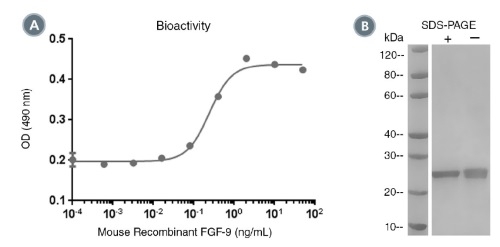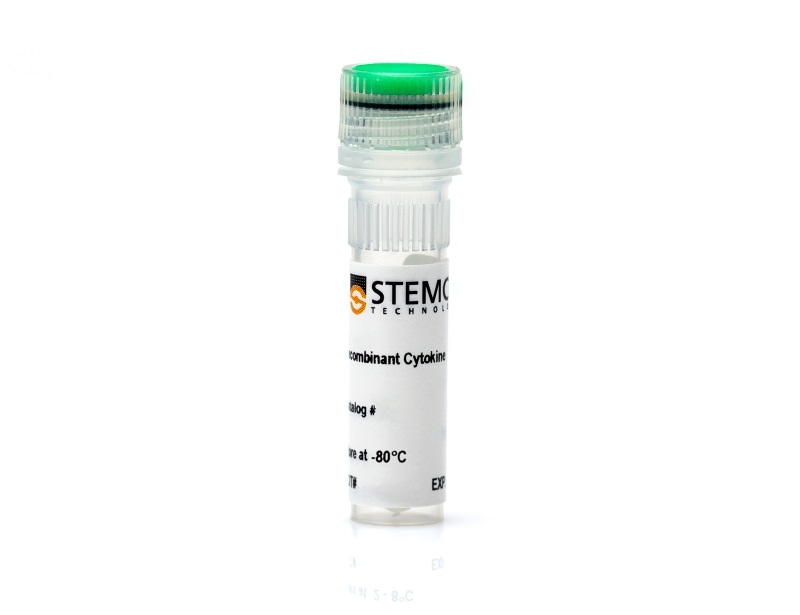Mouse Recombinant FGF-9
Fibroblast growth factor 9
概要
Fibroblast growth factor (FGF) 9 is a pleiotropic member of the FGF family. FGFs are heparin-dependent regulators of cell proliferation and differentiation (Itoh & Ornitz). FGF-9 signals by binding FGFR3 (IIIb) and the IIIc splice variants of the FGFR1, FGFR2, and FGFR3 receptors (Santos-Ocampo et al.; Mohammadi et al.; Plotnikov et al.). In mice, deletion of FGF-9 is lethal and expression of FGF-9 affects development of the skeleton, cerebellum, lungs, heart, vascular system, digestive tract, and testes (Colvin et al.; Harada et al.; Lin et al.). Altered levels of FGF-9 have also been reported in various types of human cancers (Leushacke et al.; Abdel-Rahman et al.).
Subtype
Cytokines, Growth Factors
Alternative Names
Fibroblast growth factor-9, GAF, Glia-activating factor, HBGF-9
Cell Type
Airway Cells, Mesenchymal Cells, PSC-Derived, Mesenchymal Stem and Progenitor Cells
Species
Mouse
Area of Interest
Neuroscience, Respiratory Research, Stem Cell Biology
Molecular Weight
23.4 kDa
Purity
≥ 95%
技术资料
| Document Type | 产品名称 | Catalog # | Lot # | 语言 |
|---|---|---|---|---|
| Product Information Sheet | Mouse Recombinant FGF-9 | 78176, 78176.1 | All | English |
| Safety Data Sheet | Mouse Recombinant FGF-9 | 78176, 78176.1 | All | English |
数据及文献
Data

(A) The biological activity of Mouse Recombinant FGF-9 was tested by its ability to promote the proliferation of 3T3. Cell proliferation was measured using a fluorometric assay method. The EC50 is defined as the effective concentration of the growth factor at which cell proliferation is at 50% of maximum. The EC50 in the example above is less than 5 ng/mL. (B) 2 μg of Mouse Recombinant FGF-9 was resolved with SDS-PAGE under reducing (+) and non-reducing (-) conditions and visualized by Coomassie Blue staining. Mouse Recombinant FGF-9 has a predicted molecular mass of 23.4 kDa.



